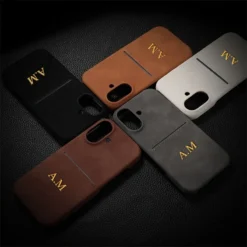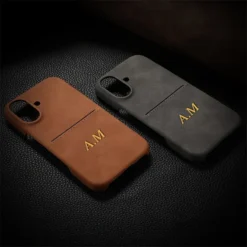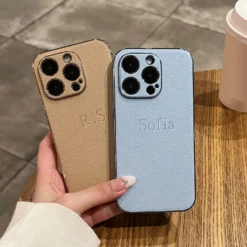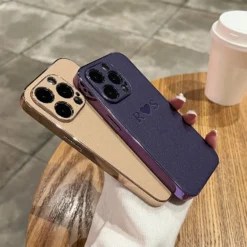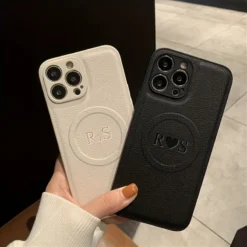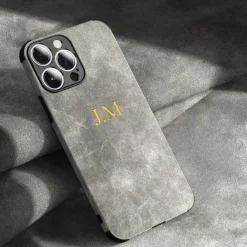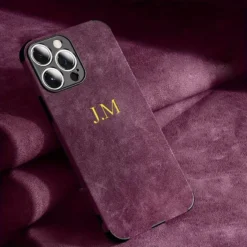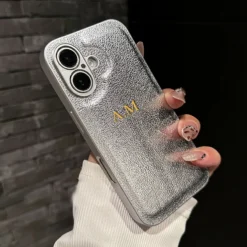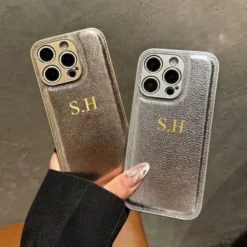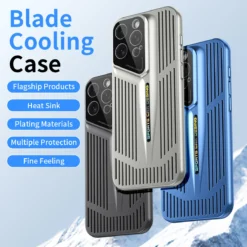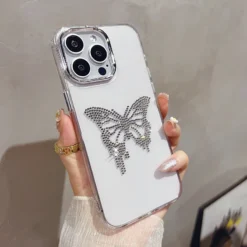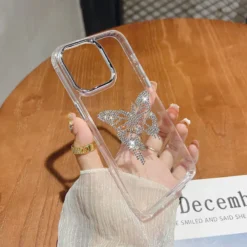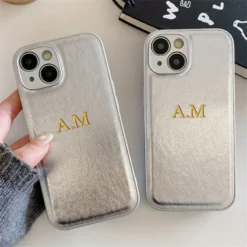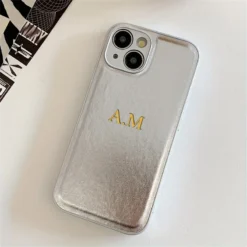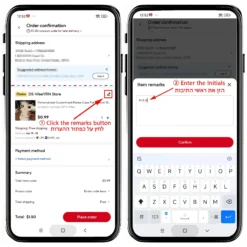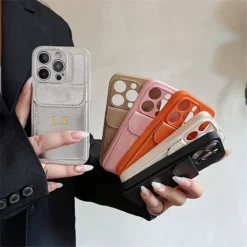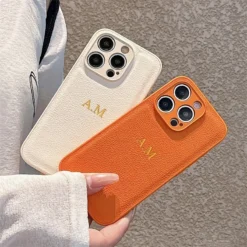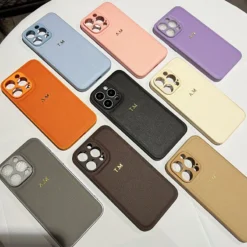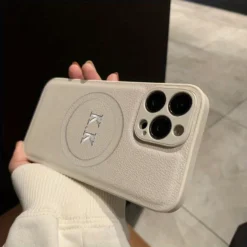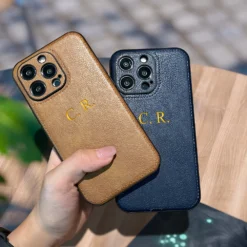what cases fit iphone 12
Table of Contents
Introduction
Cases designed for the iPhone 12 fit models released in 2020 with a 6.1-inch display. They are compatible with the standard iPhone 12 and share identical dimensions with the iPhone 12 Pro, allowing cases to be interchangeable between these two models. Cases must accommodate the flat-edge design, dual rear cameras, and precise button placements. They are not compatible with iPhone 12 mini (5.4-inch), iPhone 12 Pro Max (6.7-inch), or earlier/later iPhone generations due to size and design differences.
what cases fit iphone 12
The iPhone 12, released in 2020, remains a popular device renowned for its sleek design and advanced features. Protecting this investment with a well-fitting case is essential, both for safeguarding against damage and maintaining the phone’s aesthetic integrity. Cases specifically engineered for the iPhone 12 are designed to accommodate its precise dimensions—measuring 146.7 mm in height, 71.5 mm in width, and 7.4 mm in thickness—alongside its unique physical attributes. These include a flat-edge aluminum frame, a dual-camera system arranged vertically in the top-left corner, and precisely positioned buttons and ports. Consequently, a compatible case must align perfectly with these elements to ensure unobstructed access to the side buttons, charging port, speakers, and cameras while providing adequate coverage for the screen edges.
Notably, cases designed for the iPhone 12 are also fully compatible with the iPhone 12 Pro, as both models share identical external dimensions and button layouts. This interchangeability offers users greater flexibility in selecting protective options. However, it is crucial to avoid confusing the iPhone 12 with other models in the same generation. For instance, the iPhone 12 Pro Max features a larger chassis and camera module, while the iPhone 12 Mini has a significantly smaller form factor. Cases tailored for these variants will not fit the standard iPhone 12 correctly, potentially leaving critical areas exposed or obstructing functionality. Similarly, cases for older models like the iPhone 11 or newer releases like the iPhone 13 are incompatible due to subtle but critical differences in size, camera placement, and button alignment.
A diverse range of case types exists for the iPhone 12, including slim silicone sleeves, rugged protective covers, wallet cases, and clear options that showcase the device’s design. Materials vary from flexible TPU and polycarbonate to premium leather or sustainable alternatives, each offering distinct levels of shock absorption, grip, and style. When selecting a case, buyers should prioritize products explicitly labeled “for iPhone 12” or “compatible with iPhone 12.” Scrutinizing product descriptions and customer reviews can further verify fitment accuracy, as some universal or ill-defined accessories may compromise protection or usability. Reputable manufacturers rigorously test their designs to guarantee precise cutouts for the camera, ports, and wireless charging compatibility, ensuring the case enhances rather than hinders the iPhone 12 experience.
Ultimately, investing in a properly fitted case preserves the device’s longevity and performance. An ill-suited case risks scratches from misaligned edges, impaired audio due to blocked speakers, or even reduced drop protection. By choosing a case meticulously crafted for the iPhone 12, users achieve optimal security, seamless functionality, and a refined look that complements Apple’s engineering. Careful attention to compatibility details ensures that the case serves as a reliable guardian for this sophisticated device.
what cases fit iphone 11
When considering protective solutions for the iPhone 11, it is essential to understand the specific design characteristics of this model to ensure optimal fit and functionality. The iPhone 11, released in 2019, features a 6.1-inch Liquid Retina HD display, dual-camera system arranged vertically within a square module, and rounded edges distinct to its form factor. Consequently, cases engineered explicitly for the iPhone 11 are tailored to these precise dimensions and layout. Utilizing a case designed for this model guarantees that all ports, buttons, speakers, and the camera cutout align perfectly, thereby maintaining full accessibility and safeguarding the device without obstructing its features.
A wide array of case types exists to cater to diverse user preferences and requirements. Clear silicone or thermoplastic polyurethane (TPU) cases offer a balance of shock absorption and a minimalist aesthetic, allowing the iPhone 11’s original color to remain visible. For enhanced durability, rugged cases incorporating polycarbonate shells with reinforced corners and raised bezels provide superior drop protection, particularly beneficial for active lifestyles. Alternatively, wallet cases merge practicality with defense, integrating card slots and a front cover that shields the screen when not in use. Leather cases present a sophisticated option, developing a unique patina over time while delivering reliable daily protection. Each style must conform meticulously to the iPhone 11’s contours to prevent slippage or misalignment.
It is crucial to note that cases designed for other iPhone models, such as the iPhone 12, are incompatible with the iPhone 11 despite superficial similarities. The iPhone 12, introduced a year later, possesses a flat-edge design, a slightly different thickness, and a rearranged camera module. Consequently, an iPhone 12 case will not seat correctly on an iPhone 11, potentially leaving critical areas exposed or causing misaligned buttons and ports. This incompatibility underscores the importance of selecting accessories explicitly labeled for the iPhone 11. Manufacturers rigorously test these cases to ensure they meet the exact specifications, including accommodating the device’s curved edges and camera placement.
When selecting a case, factors such as material quality, drop-test certifications (e.g., MIL-STD-810G), and user reviews should guide the decision. Additionally, verifying compatibility through product descriptions or retailer specifications prevents inadvertent mismatches. Ultimately, investing in a case crafted solely for the iPhone 11 guarantees comprehensive protection, preserves device functionality, and enhances longevity, providing peace of mind for users seeking to maintain their device’s integrity amidst daily use.
what cases fit iphone 13
The iPhone 12 and iPhone 13 share a remarkably similar external design philosophy, leading many users to question whether cases designed for one model will adequately fit the other. While the overall dimensions and aesthetic are closely aligned, subtle yet critical differences exist that impact case compatibility. Consequently, understanding these nuances is essential for ensuring both protection and functionality. Primarily, the overall footprint of both phones is nearly identical. Both feature flat edges, a flat display, and share very similar height and width measurements. This fundamental similarity means that many basic silicone, plastic, or fabric cases designed for the iPhone 12 will physically slide onto an iPhone 13 without issue, covering the sides and back adequately. The shared design language provides a baseline level of interchangeability for simpler case designs.
However, significant divergences become apparent when examining specific functional elements. The most notable difference lies in the rear camera system. The iPhone 13 features a larger camera module with diagonally arranged lenses compared to the vertically stacked lenses on the iPhone 12. Consequently, a case designed specifically for the iPhone 12 will have a camera cutout that is too small and incorrectly shaped for the iPhone 13’s lenses. This misalignment can partially obstruct the camera, potentially degrading photo and video quality, or leave parts of the larger module exposed and vulnerable to scratches or impacts. Therefore, using an iPhone 12 case on an iPhone 13 risks compromising the camera’s performance and protection.
Furthermore, subtle shifts in button placement and speaker/microphone grilles introduce additional compatibility challenges. The side buttons (volume and mute switch) on the iPhone 13 are positioned slightly lower than those on the iPhone 12. While a flexible iPhone 12 case might stretch to accommodate the iPhone 13’s buttons, a rigid case will likely cause misalignment. This can make pressing the buttons difficult, overly stiff, or even impossible without removing the case. Similarly, the bottom speaker and microphone cutouts on the two models are not perfectly identical. An iPhone 12 case might partially cover the iPhone 13’s speakers or microphones, leading to muffled sound during calls, media playback, or recordings. These functional mismatches highlight that even if the case fits physically, usability can be severely hampered.
In summary, while the core chassis similarity allows an iPhone 12 case to physically encase an iPhone 13, it is generally not recommended due to critical incompatibilities. The mismatched camera cutout poses a direct risk to camera functionality and protection, while the offset buttons and potential obstruction of audio ports degrade the user experience. For optimal protection, functionality, and to fully utilize the iPhone 13’s features, investing in a case explicitly designed for the iPhone 13 is the prudent choice. Manufacturers design these cases with precise cutouts and button alignments to ensure seamless integration, safeguarding your device without compromising on accessibility or performance.
are iphone 14 and 15 cases the same
The question of whether iPhone 14 and iPhone 15 cases are interchangeable arises frequently among consumers upgrading devices or seeking accessory compatibility. While both generations share foundational design elements, several nuanced differences impact case fitment, making universal compatibility inconsistent across models. Fundamentally, the standard iPhone 14 and iPhone 15 (non-Pro) models retain identical dimensions—6.1 inches for the base variant and 6.7 inches for the Plus—along with matching button placements and overall chassis contours. Consequently, many flexible or minimally structured cases, such as silicone sleeves or basic TPU covers, might physically accommodate both devices without immediate issues. However, this superficial similarity belies critical divergences that affect functionality and protection.
Most notably, the camera array on the iPhone 15 and 15 Plus features larger individual lenses compared to the iPhone 14 series. Cases designed for the iPhone 14 often leave insufficient clearance for the upgraded lenses on the iPhone 15, potentially causing vignetting in photos or leaving the camera bump exposed. Additionally, the iPhone 15 models introduce subtly curved edges at the front glass, replacing the flat-edged screen of the iPhone 14. While this change is minimal, rigid or precision-fitted cases may not align perfectly, compromising aesthetic cohesion or edge coverage. Transitioning to the Pro variants, the differences become more pronounced. The iPhone 15 Pro and Pro Max replace the traditional mute switch with a multifunctional Action button—a hardware revision that renders cases for the iPhone 14 Pro models incompatible due to mismatched cutouts. Furthermore, although both Pro generations share 6.1-inch and 6.7-inch displays, the iPhone 15 Pro series employs a lighter titanium frame with marginally reduced bezels, subtly altering the device’s profile. Cases engineered for the iPhone 14 Pro’s stainless steel frame and slightly thicker build may thus fit loosely or misalign on the newer models.
Port compatibility presents another consideration. The iPhone 15 series universally adopts USB-C, replacing Lightning, but since most cases feature an open-bottom design, this rarely impedes fit. Nevertheless, cases with precise port cutouts might exhibit minor gaps. Manufacturers occasionally address cross-generational support by designing cases with oversized camera cutouts or flexible button covers, but these compromises can undermine protection. Ultimately, while certain minimalist cases might function across both generations, Apple’s iterative refinements—particularly in camera sizing, button architecture, and chassis materials—mean that cases optimized for the iPhone 14 will not reliably deliver a secure, precise fit for the iPhone 15. For optimal safety and usability, selecting model-specific cases remains advisable.
what cases fit iphone 14 plus
When considering protective solutions for the iPhone 14 Plus, understanding case compatibility is paramount to ensure both optimal functionality and device safety. The iPhone 14 Plus, introduced in 2022, features a distinctive 6.7-inch display and specific dimensional attributes—measuring 160.8 mm in height, 78.1 mm in width, and 7.80 mm in depth—that necessitate cases engineered precisely for its form. Consequently, cases explicitly labeled for the iPhone 14 Plus will deliver the most seamless fit, aligning perfectly with its camera array, button placements, and port cutouts. This precision safeguards against accidental pressure on components or obstruction of features, maintaining the device’s sleek usability while offering comprehensive protection against drops, scratches, and daily wear.
It is crucial to recognize that cases designed for other iPhone models, even those with similar screen sizes, will not accommodate the iPhone 14 Plus adequately. For instance, cases for the standard iPhone 14—despite sharing design language—are incompatible due to the Plus model’s larger chassis. Similarly, cases for the iPhone 13 Plus or iPhone 12 Pro Max may appear superficially fitting but often result in misaligned buttons, imprecise camera cutouts, or loose edges, compromising both protection and aesthetic coherence. Even older Plus-sized models, such as the iPhone 8 Plus, differ significantly in thickness and button positioning, rendering their cases unsuitable. Therefore, assuming cross-generational compatibility risks exposing the device to potential damage and diminishes the user experience.
The market offers a diverse range of iPhone 14 Plus-specific cases tailored to varying needs and preferences. Slim silicone and leather options provide everyday protection with minimal bulk, while rugged cases with reinforced corners and raised bezels cater to demanding environments. Clear cases, popular for showcasing the device’s finish, utilize flexible thermoplastics or rigid polycarbonate engineered to resist yellowing over time. Additionally, specialty cases—such as wallet-integrated designs or battery-extending MagSafe-compatible variants—are meticulously contoured to the iPhone 14 Plus’s dimensions, ensuring wireless charging efficiency and accessory synergy. When selecting a case, always verify the product description explicitly mentions compatibility with the iPhone 14 Plus, as retailers often categorize accessories by model-specific SKUs.
Ultimately, investing in a case designed exclusively for the iPhone 14 Plus guarantees not only physical safeguarding but also preserves the integrity of its advanced features, from camera performance to ergonomic comfort. As smartphone designs evolve incrementally, adhering to model-specific accessories remains the most reliable strategy for longevity and peace of mind.
will iphone 14 case fit iphone 13
When upgrading from an iPhone 13 to an iPhone 14, a common question arises regarding accessory compatibility, specifically whether an iPhone 14 case will fit the iPhone 13. While both models share a strikingly similar aesthetic and identical screen size of 6.1 inches for the standard variants, subtle yet critical design differences render their cases largely incompatible. Consequently, using an iPhone 14 case on an iPhone 13 is generally not recommended and may compromise both protection and functionality.
The most significant factor affecting compatibility lies in the rear camera system. Although both phones feature a dual-camera array, Apple redesigned the camera module for the iPhone 14 series. Specifically, the iPhone 14 cameras are slightly larger in diameter and positioned further apart compared to those on the iPhone 13. This means an iPhone 14 case will have larger and more widely spaced cutouts. When placed on an iPhone 13, these oversized cutouts will expose significant areas around the smaller, closer-together lenses, leaving them vulnerable to scratches and impacts. Furthermore, the misalignment may partially obstruct the flash or microphone, potentially affecting photo quality and audio recording during video capture.
Beyond the camera, dimensional variances also pose issues. The iPhone 14 is marginally thicker and fractionally heavier than its predecessor. While this difference might seem negligible, it means an iPhone 14 case will likely fit loosely on an iPhone 13. This loose fit reduces the case’s protective efficacy, increasing the risk of the phone shifting within the case during a drop and potentially suffering damage. Additionally, the positions of the side buttons (volume and power) and the mute switch, while appearing identical, can have minute shifts in placement between models. An iPhone 14 case might therefore have button cutouts that are slightly misaligned on the iPhone 13, leading to stiff or unresponsive button presses and difficulty accessing the mute switch.
Conversely, attempting to use an iPhone 13 case on an iPhone 14 presents its own set of problems. The tighter dimensions of the older case will struggle to accommodate the iPhone 14’s increased thickness and larger camera bumps. This can result in a strained fit, potentially causing the case to warp or bulge, particularly around the camera module. The smaller camera cutouts on the iPhone 13 case may also partially cover the iPhone 14’s lenses or flash, degrading photo and video quality. Therefore, just as an iPhone 14 case is unsuitable for the iPhone 13, the reverse scenario is equally inadvisable.
In conclusion, despite the superficial resemblance between the iPhone 13 and iPhone 14, the intentional design refinements introduced with the newer model necessitate dedicated accessories. For optimal protection, precise button functionality, and unobstructed camera performance, it is essential to use a case specifically engineered for your device. Utilizing a case designed for a different model, even one as visually similar as the iPhone 14 to the iPhone 13, introduces unnecessary risks and compromises the very safeguards the case is meant to provide.
are iphone 13 and 14 cases the same
As consumers navigate the evolving landscape of iPhone accessories, a common question arises regarding case compatibility, particularly between successive models like the iPhone 13 and iPhone 14. Understanding the nuances of design changes is crucial for selecting the appropriate protection for your device. While the iPhone 12, iPhone 13, and iPhone 14 share a similar aesthetic lineage and identical screen sizes for their respective standard and Pro variants, subtle yet significant differences exist that directly impact case interchangeability. Specifically, cases designed for the iPhone 12 are not compatible with the iPhone 13 or iPhone 14 due to alterations in camera module placement and minor dimensional adjustments. The camera array on the iPhone 12 features vertically aligned lenses, whereas both the iPhone 13 and iPhone 14 adopted a diagonal arrangement for their dual-lens systems. This shift alone necessitates distinct case designs to accommodate the altered cutouts.
Transitioning to the relationship between the iPhone 13 and iPhone 14, the situation becomes more favorable for cross-compatibility, particularly for the standard non-Pro models. Apple maintained remarkably consistent external dimensions and button placements between these two generations. Consequently, many cases marketed for the iPhone 13 will physically fit the standard iPhone 14, and vice versa. The shared form factor means the cases align properly around the edges, buttons, and the Lightning port. However, it is essential to note a potential caveat concerning the rear camera cutouts. While the diagonal lens arrangement remains identical, the iPhone 14 features slightly larger individual camera lenses and sensors compared to the iPhone 13. This means that while a case designed for the iPhone 13 *can* fit the iPhone 14, the camera cutout might be marginally tighter or less precise on the newer model, potentially causing slight vignetting in photos or an imperfect aesthetic fit around the lenses. Some manufacturers address this by explicitly labeling cases as compatible with both models, often after verifying the cutout clearance.
For users seeking optimal protection and fit, selecting a case specifically designed for their exact iPhone model is always recommended. This ensures perfect alignment for all ports, speakers, microphones, buttons, and camera lenses. While the physical similarities between the iPhone 13 and iPhone 14 standard models allow for a degree of interchangeability in many instances, relying on a case tailored for the precise model guarantees no compromises in functionality or protection. Conversely, attempting to use an iPhone 12 case on either an iPhone 13 or iPhone 14 is ill-advised due to the fundamental differences in camera layout and dimensions, which will result in misaligned cutouts and an improper fit. Therefore, when choosing a case, careful attention to the specified model compatibility remains the most reliable approach to safeguard your investment effectively.
do iphone 13 cases fit 14
When upgrading from an iPhone 13 to an iPhone 14, a common question arises: can existing iPhone 13 cases be reused? This query is understandable, given the visual similarities between the two generations. However, subtle design changes mean compatibility isn’t universal, and understanding these nuances ensures optimal protection and functionality. To begin, it’s important to note that Apple maintained identical screen sizes across the standard models—both the iPhone 13 and iPhone 14 feature a 6.1-inch display, while the iPhone 13 Pro Max and iPhone 14 Plus share a 6.7-inch screen. Despite this, dimensional differences exist. The iPhone 14 and 14 Plus are marginally thicker—approximately 0.15mm—than their iPhone 13 counterparts. While this seems negligible, it can result in a slightly looser fit for cases designed specifically for the iPhone 13, potentially compromising secure hold and drop protection.
Moreover, camera modifications further complicate compatibility. The iPhone 14 and 14 Plus retain a dual-camera system but feature larger individual lenses and a reconfigured layout compared to the iPhone 13 series. Consequently, an iPhone 13 case may partially obstruct the lenses or leave excessive gaps around the camera module on an iPhone 14, risking lens flare, dust accumulation, or reduced photo quality. Button placements—such as volume and side buttons—remain consistent, so cases will align correctly here. Yet, microphone and speaker cutouts might not match perfectly due to minor internal hardware repositioning, potentially muffling audio during calls or media playback.
Transitioning to the Pro models, compatibility diminishes entirely. The iPhone 14 Pro and Pro Max introduced the Dynamic Island—a pill-shaped cutout replacing the notch—alongside significantly larger camera sensors. These changes render iPhone 13 Pro and Pro Max cases incompatible, as the camera cutouts won’t align, and the Dynamic Island’s unique shape requires precise framing. Even attempting to fit an older case could damage the lenses or block essential sensors. For clarity, iPhone 13 cases may physically attach to an iPhone 14 or 14 Plus in a pinch, but the fit will be suboptimal. Conversely, iPhone 13 Pro/Pro Max cases cannot accommodate iPhone 14 Pro/Pro Max devices under any circumstances.
Ultimately, while reusing an iPhone 13 case on an iPhone 14 might seem economical, it introduces risks like reduced protection, impaired functionality, and potential aesthetic mismatches. Apple and third-party manufacturers design cases with model-specific tolerances to account for even minute structural updates. Therefore, investing in a case tailored for the iPhone 14 series is strongly recommended. This ensures precise cutouts, secure adhesion, and uncompromised access to all features, safeguarding both the device’s integrity and the user experience. In essence, prioritizing a purpose-built accessory guarantees peace of mind alongside optimal performance.
do iphone 14 cases fit iphone 15
When upgrading from an iPhone 14 to an iPhone 15, a common question arises: can existing iPhone 14 cases be reused? While Apple’s design language maintains visual continuity across generations, subtle
do iphone 15 cases fit iphone 13
The question of whether iPhone 15 cases are compatible with the iPhone 13 arises frequently, particularly as users upgrade devices and seek to reuse accessories. However, it is important to clarify that **iPhone 15 cases are not compatible with the iPhone 13**. This incompatibility stems from deliberate design changes Apple implemented across these generations, resulting in distinct physical profiles and functional layouts. While both models share similarities in their sleek, flat-edged aesthetic, several critical differences prevent cases from fitting correctly or functioning properly when swapped between these devices.
Firstly, the **overall dimensions** of the iPhone 15 and iPhone 13 differ subtly but significantly. The iPhone 15 features a marginally larger footprint—slightly taller and wider—than the iPhone 13. Consequently, an iPhone 15 case will be too loose on an iPhone 13, failing to provide a secure fit or adequate protection against impacts. This looseness can lead to the phone shifting within the case, potentially exposing edges to damage and compromising the structural integrity of the case itself. Moreover, the **camera system** underwent notable revisions. The iPhone 15 boasts a larger, more advanced dual-camera array compared to the iPhone 13. Cases designed for the iPhone 15 feature a wider, asymmetrical camera cutout to accommodate this updated module. If placed on an iPhone 13, this oversized cutout would leave the smaller camera lenses partially exposed and misaligned, increasing the risk of scratches or impact damage to the lenses and failing to provide a flush, protective enclosure.
Beyond size and camera alignment, **functional elements** further complicate compatibility. The **side button placements** on the iPhone 15 are slightly lower than those on the iPhone 13. A case molded for the iPhone 15 would therefore misalign with the volume and side buttons on the iPhone 13, making them difficult or impossible to press reliably. Additionally, the **charging port** area presents another obstacle. While both models use Lightning ports, the internal chassis and external cutout dimensions around the port differ. An iPhone 15 case might partially obstruct the port on an iPhone 13 or leave excessive gaps, potentially interfering with cable insertion or accumulating debris. Finally, the **speaker and microphone grilles** at the bottom edge are arranged differently between the two models. A mismatched case could inadvertently block these essential audio components, muffling sound during calls or media playback and degrading overall functionality.
Attempting to force an iPhone 15 case onto an iPhone 13, or vice versa, risks not only poor protection but also potential damage to the device or the accessory. The misalignment can strain the case material, leading to premature wear or breakage, while the exposed components on the phone remain vulnerable. For optimal safety, performance, and aesthetic fit, it is strongly recommended to use cases specifically designed for your iPhone model. Manufacturers clearly label compatibility based on precise measurements and cutouts; selecting a case tailored to the iPhone 13 ensures all features remain accessible and the device is fully shielded. In summary, despite superficial resemblances, the structural and functional refinements in the iPhone 15 render its cases unsuitable for the iPhone 13, necessitating model-specific accessories for reliable protection.
Q&A
1. What are the dimensions for an iPhone 12 case?
Cases must fit a 6.1-inch display with dimensions of 146.7 x 71.5 x 7.4 mm.
2. Are iPhone 12 cases compatible with iPhone 12 Pro?
Yes, iPhone 12 and iPhone 12 Pro share identical dimensions and button placements, so cases are interchangeable.
3. Do iPhone 12 cases work with iPhone 13?
No. The iPhone 13 has slightly different camera layouts and thicker dimensions, making most iPhone 12 cases incompatible.
4. What case types protect against drops?
Rugged cases (e.g., OtterBox Defender), heavy-duty silicone, or hybrid cases with reinforced corners offer the best drop protection.
5. Which materials are common for iPhone 12 cases?
Silicone, TPU (flexible plastic), polycarbonate (hard plastic), leather, and fabric.
6. Can I use MagSafe accessories with any iPhone 12 case?
Only cases with built-in MagSafe-compatible magnets (e.g., Apple’s MagSafe cases) support wireless charging and accessories.
7. Are waterproof cases available for iPhone 12?
Yes, brands like Lifeproof or Catalyst offer waterproof cases rated IP68 for submersion.
8. Do slim cases provide adequate protection?
Slim cases offer scratch and minor bump protection but minimal drop defense compared to bulkier options.
9. Where are the cutouts located on iPhone 12 cases?
Cutouts align with the bottom charging port, side buttons, rear dual-camera array, and mute switch.
10. How much do iPhone 12 cases typically cost?
Prices range from $10–$20 for basic TPU cases to $50+ for premium brands like Apple, Spigen, or UAG.
Conclusion
Cases designed specifically for the iPhone 12 (6.1-inch model) ensure a precise fit. Compatible cases include those explicitly labeled for the iPhone 12, as well as cases made for the iPhone 12 Pro due to identical dimensions and button/camera cutout placements. Avoid cases for iPhone 12 mini (smaller), iPhone 12 Pro Max (larger), or older iPhone models (e.g., iPhone 11 series), as they will not align correctly with the iPhone 12’s form factor, camera layout, or port/button positions.
Tony Lin
Tony.Lin is a Chief Mobile Accessories Expert dedicated to thoroughly researching and understanding the latest trends and technologies in mobile device protection and enhancement. With years of experience in phone case material science, ergonomic design, and user experience, he focuses on providing consumers with authoritative, practical advice to help them make the best choices for their smart devices.



